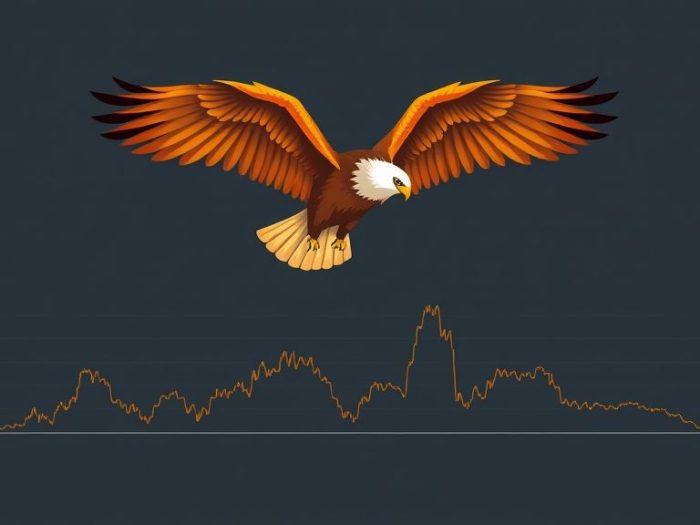The Iron Condor is an options trading strategy designed to profit from sideways or range-bound
markets. It’s a non-directional strategy, meaning you’re betting on the stock price staying
within a defined range. This article provides a comprehensive guide on how to use the Iron
Condor effectively.
Understanding the Iron Condor
The Iron Condor is a limited risk, limited profit options strategy that involves four
options contracts:
-
Sell an Out-of-the-Money (OTM) Put: You sell a put option below the current
stock price. -
Sell an Out-of-the-Money (OTM) Call: You sell a call option above the current
stock price. - Buy an OTM Put: You buy a put option further below the sold put for protection.
-
Buy an OTM Call: You buy a call option further above the sold call for
protection.
Why Use the Iron Condor?
-
Profit from Sideways Markets: The strategy is designed to profit when the stock
price stays within a defined range. - Limited Risk: The bought options limit your potential losses.
- Time Decay: You profit from the time decay of the options you sell.
Step-by-Step Guide to Implementing the Iron Condor
1. Select a Stock
Choose a stock that you expect to trade within a range. Consider:
- Volatility: Moderate volatility is ideal.
- Earnings Announcements: Avoid trading around earnings.
- Liquidity: Ensure the stock has actively traded options.
2. Determine the Trading Range
Identify support and resistance levels to define the expected trading range.
3. Choose Expiration Date
Select an expiration date that gives the stock enough time to stay within the range but also
allows for sufficient time decay. Typically, 30-45 days to expiration is common.
4. Select Strike Prices
Choose strike prices for your options.
- Sold Put and Call: Sell OTM puts and calls just outside your expected trading range.
- Bought Put and Call: Buy OTM puts and calls further outside the range for protection.
The distance between the sold and bought options defines the width of your “wings” and
determines your risk and reward.
5. Execute the Trades
Place orders to sell the put and call options and buy the protective put and call options.
Example
Let’s say XYZ stock is trading at $50, and you expect it to stay between $45 and $55 for the
next month.
- Sell a put option with a $45 strike price.
- Sell a call option with a $55 strike price.
- Buy a put option with a $40 strike price (for protection).
- Buy a call option with a $60 strike price (for protection).
Maximum Profit
Your maximum profit is the net credit received from selling the options minus any commissions.
You achieve maximum profit if the stock price stays between the sold put and call strike
prices at expiration.
Maximum Loss
Your maximum loss is limited and is calculated as the difference between the strike prices
of the sold and bought options (minus the net credit received).
When to Avoid the Iron Condor
- Strong Trending Markets: Avoid this strategy when you expect a strong upward or downward trend.
- High Volatility: High volatility increases the risk of the price moving outside your expected range.
- Earnings Announcements: Avoid trading around earnings releases due to unpredictable price swings.
Important Considerations
- Risk Management: Understand your maximum profit and maximum loss before entering the trade.
- Strike Price Selection: Choose strike prices that balance income potential and the probability of the stock staying within the range.
- Expiration Date: Select an appropriate expiration date that gives the stock enough time to stay within the range.
- Commissions and Fees: Factor in trading costs.
Conclusion
The Iron Condor is a versatile strategy for generating income in sideways markets. However,
it’s essential to understand the risks and manage your trades carefully. Choose stocks and
options wisely, and always use proper risk management techniques.
Related Keywords
Iron Condor, options trading, options strategy, non-directional trading, options income,
options trading for income, options trading strategies, options trading guide, options
trading tutorial, options for sideways markets.
Frequently Asked Questions (FAQ)
1. What is an Iron Condor?
An Iron Condor is a non-directional options strategy designed to profit from
sideways or range-bound markets.
2. How many options contracts are involved in an Iron Condor?
An Iron Condor involves four options contracts: selling an out-of-the-money put
and call, and buying an out-of-the-money put and call for protection.
3. What is an out-of-the-money (OTM) option?
An out-of-the-money (OTM) option is a call option with a strike price above
the current stock price or a put option with a strike price below the current
stock price.
4. What is the purpose of selling options in an Iron Condor?
You sell options to collect the premium, which is your potential profit.
5. What is the purpose of buying options in an Iron Condor?
You buy options further out-of-the-money for protection against significant
price moves outside your expected range, limiting your potential losses.
6. What is the maximum profit potential of an Iron Condor?
The maximum profit is the net credit received from selling the options minus
any commissions.
7. What is the maximum loss potential of an Iron Condor?
The maximum loss is limited and is calculated as the difference between the
strike prices of the sold and bought options (minus the net credit received).
8. When is the Iron Condor strategy most effective?
The Iron Condor strategy is most effective in sideways or range-bound markets
when the stock price is expected to stay within a defined range.
9. When should I avoid using the Iron Condor strategy?
Avoid using the Iron Condor in strong trending markets or during periods of
high volatility, as the price is more likely to move outside your expected range.
10. What are the key factors to consider when trading Iron Condors?
Key factors include risk management, strike price selection, expiration date
selection, and commissions and fees.



